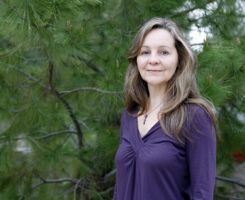The plan also prescribes exercise, although not any particular regimen. “Find something you love and incorporate it into your daily routine,” O’Neil said.
To focus on mental health, plan adherents are encouraged to keep journals, get plenty of sleep, and to incorporate goal-setting and a sense of gratitude into their lives.
“Our thoughts run our lives, and so it’s a really important area to become focused and goal-oriented, to express gratitude.” Like traditional 12-step addiction recovery plans, which ask followers to acknowledge a higher power, the Daniel Plan emphasizes that faith can carry participants through when they run out of internal motivation.
“When we rely on our own will power, at some point, we just run out of gas,” O’Neil said. “It isn’t enough.”
Daniel Plan in Action
When Pastor Warren rolled out the plan’s pilot in January 2011, the premise resonated with his congregation immediately. “Rick (Warren) thought a couple hundred people might sign up,” O’Neil told Holistic Primary Care. “Turns out in the first year, we had 15,000 people.”
Collectively, those first-year participants lost over 260,000 pounds, an average of more than 17 pounds per participant.
“(And) it wasn’t just weight loss. People reported their cholesterol levels were lowering, their blood pressure improving, better sleep, more energy, being able to be more physically active. All these what we call amazing side-effects of getting healthy….Some people were even able to get off their medications.”
Jeanine Feld, the church employee with fibromyalgia, started making the recommended changes when she went through the church’s health and nutrition class. She eliminated or minimized carbohydrates, salt, caffeine, dairy products and sugar.
eliminated or minimized carbohydrates, salt, caffeine, dairy products and sugar.
“I found out that sugar brings inflammation, which is pain,” Feld said. “That changed everything for me. Within seven to 10 days, I was almost pain-free, and I didn’t have to take hardly any pain medicine.”
Feld also added copious amounts of veggies and berries and started watching her food group proportions. She actually eats more throughout the day now than she did before, but has lost 10 pounds she gained from medications and another five pounds after that.
“Fibromyalgia is not gone, it’s still there,” she said. “But I’ve minimized a lot of the pain through nutrition, which is exactly what I wanted.”
While nutrition is perhaps the main component of the Daniel Plan equation, community is what makes the nutritional recommendations effective. O’Neil said that within the church, they’ve found that people lose up to 50% more weight when they’re following the plan with another person or a group.
“It’s really dramatic,” O’Neil said. “You need support, you need encouragement, you need accountability.”
Encouragement, Support, Accountability
The church provides a curriculum for people to follow the plan together in small groups. This, says church member Mandy Cameron, has made all the difference.
Cameron struggled for years to foster a healthy relationship with food. After a trauma early in life, she became what she describes as a “practiced food addict,” and would binge on sweets in secret. “I quickly became addicted to sugar,” Cameron said. “It doesn’t take long.”
In college, she tried to address her bad eating habits by completely eliminating them. She soon found that anorexia was no path to health. In her early 30s, she started trying to follow the teachings of nutritionist Adelle Davis, who advocated an unprocessed diet. While she had some success– she says the changes in her diet helped her get rid of asthma – she still had to struggle alone with her sugar addiction.
“I was the only one willing to stick with (the diet), and then it was just like really a lot of work, because it was all me,” she said in an interview.
Cameron was in her early 70s and still struggling with diet when she learned about the Daniel Plan at her church. “I was 172 pounds and I couldn’t lose it,” she said.
The plan’s message about unprocessed foods and community attracted Ms. Cameron. She started attending every meeting and every lecture, furiously scribbling notes on everything that was said. At a talk by Dr. Hyman, she saw another woman a couple of seats down, scribbling just as fast.
“I looked at this girl, and I thought, ‘Man, we’re alike,'” Cameron said, laughing.
More than two years later, the two women, and others that joined along the way, still meet for a small support group. Cameron has lost 42 pounds. Others in the group have lost up to 60 pounds.
“Without them, I don’t know what I would have done,” Cameron said. “I would still be like, slipping and coming back, slipping and coming back.”
For some, the church provides a welcome place for self-maintenance. Church member Matt Burstein was out of shape with achy knees when he joined the Daniel Plan. After his 17-year marriage broke up, Burstein decided to take it as a positive life change, but he was self-conscious about his condition.
“Overweight, unattractive,” he said. “I just felt groggy. … Everything in my body hurt, all the time.”
He had been going to the gym, but found the vibe a little judgmental. He tried working out at home with exercise DVDs, but lost interest quickly. In church one day, he heard Pastor Warren mention that fitness guru Billy Blanks had come to town and started a Tae Bo class at the church. He gave it a shot and was hooked. The church fitness classes gave him the energy he was looking for without the judgment he dreaded at the gym.
Burstein has taken several fitness classes through the church now, including a boot camp class taught by Tony Lattimore, a star of the popular P90X fitness DVDs.
“(Classes have) great music, a lot of energy, there’s 70 to 90 people in there, all different walks and shapes and sizes. … and at church,” Burstein said. “It kept me going to church, it kept me involved.”







